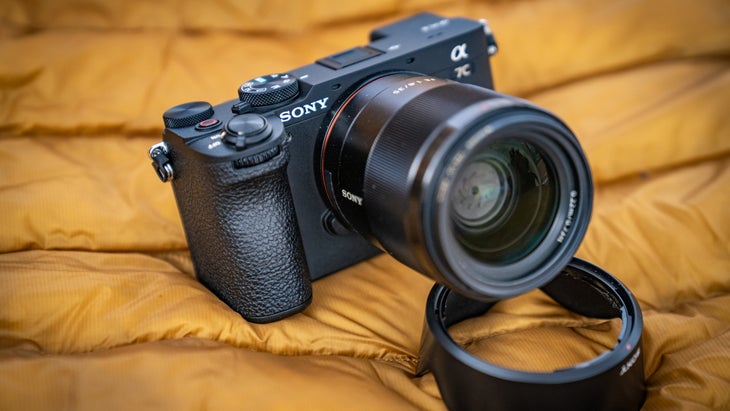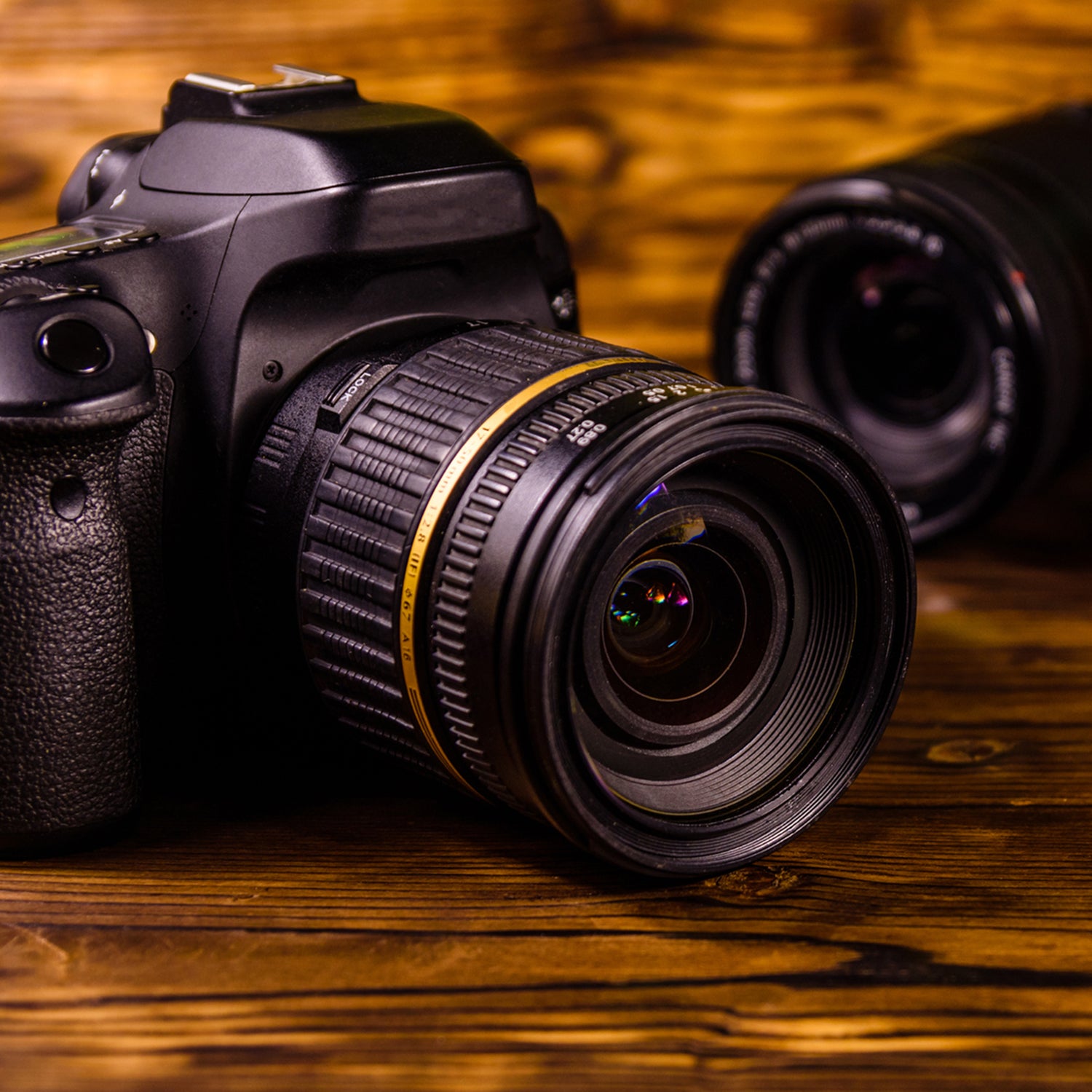For the past 25 years I’ve spent way too much time thinking and talking about cameras, from the iPhone to high-end mirrorless models.��As a tech nerd, I’ve dug deep into the minutia of various features, gone breathless debating differences between brands, and tried to get my hands on every model currently available to test.
Over the course of my obsession, I’ve learned how to decipher the marketing lingo and differentiate between the hundreds of options. Here’s my advice for anyone shopping for a new camera system.
Get Ready for a Long-Term Relationship
Those of us who play outside know that when we buy an expensive piece of gear, like a mountain bike, we’re essentially committing to a multi-year relationship. The price tag is big enough that we’ll need that much time to get our money’s worth. But we also know that in a couple years��we’ll likely upgrade to what comes next in order to stay up on current technology.
Cameras are similar but require an even longer commitment. That’s because cameras come as a system—body, lenses, flashes, accessories, etc. A camera system is a big investment—expect to shell out around $1,500 for an entry-level setup and up to $10,000 for a high-end system. That’s a lot of money, so��you’ll want to stick with that system to avoid the giant headache, and cost, of building an entirely new system when you upgrade one piece.
You’ll likely upgrade your camera bodies regularly because those, like mountain bikes, become outdated fairly quickly. But lenses, which are often just as expensive as camera bodies, have a much longer shelf life. The same is true for accessories like flashes and camera bags, so once you’ve dialed in your system, you’ll want to stick with that specific brand. Do your research to find out which brand suits your needs.
Choose Your Brand Carefully
A camera brand is more than a name. Each brand has distinctive characteristics, and since you plan to stick with a brand, you’ll want to ask these detailed questions when choosing.
- Do I like the ergonomics of the camera? Each camera brand has its own way of organizing buttons, dials, and digital menus and you’ll find that you often like one system better than the rest. Each camera feels different in your hand as well, so try to hold as many as possible.
- Do I like the camera’s color palette and tonality? All of the major brands—Sony, Canon, Nikon, and Fuji, as well as lesser-known brands like Olympus and Pentax—make cameras that churn out beautiful photos. But the photos are all slightly different in terms of how they reproduce colors and how they capture highlights and shadows. You’ll need to dig around, look at examples, and determine which one you like best.
- Does the brand offer the lenses I want?��All brands offer a similar lineup of high-quality lenses, but there are subtle differences that might help you make your decision. Canon, for example, offers a 28-70mm lens that goes down to f/2 instead of just f/2.8. That extra stop often can make all the difference when shooting in low light.
- Do the cameras come with the features I need? If you love landscape and portraiture photography, you’ll want a camera with a high-resolution sensor for capturing detail. If you love action, look for a brand that offers a camera with a high frame rate.
Go Mirrorless

You could spend a week combing through threads about whether DSLRs or mirrorless cameras are better, but the short answer is this: mirrorless cameras are the future and that’s where you should spend your money.
Some people like that the viewfinder on a DSLR is optical, not digital, but the digital viewfinders these days are so good that you’ll never have any problems. Some people like the larger form factor of DSLRs when handling big lenses, but it’s easy to add an extra grip to a mirrorless that makes these smaller cameras just as easy to handle.
The advantages of the mirrorless camera, on the other hand, are numerous and growing. They’re smaller��and therefore easier to transport on adventures. You can also shoot silently, since there’s no mirror moving around, which is an advantage in situations where you’re capturing wildlife or other sensitive scenes.
Related: Our 3 favorite cameras for adventurers and travel junkies
There used to be more lenses for DSLR cameras, but all the major companies now have a full line of high-quality lenses for mirrorless cameras, and the prices have also come down.
Go with a Full-Frame vs. APS-C Sensor
Cameras work by gathering light, and the more light a camera can gather, the better opportunity it has to make a stunning photo. Full-frame sensors gather a lot of dang light and therefore are my go-to when investing in a camera system. The big three camera companies—Sony, Canon, and Nikon—all make amazing full-frame cameras that I wouldn’t hesitate to recommend.
Read more: This is the most travel-friendly, pro-level camera we’ve tested
I’ve tested plenty of cameras with APS-C sensors, but there’s really only one I would recommend: the Fujifilm X100VI. Though this camera has a smaller APS-C sensor, it still shoots great images and the fixed lens makes it easy to carry and use.
In an ideal world, you own a full-frame camera for landscapes, portraiture, and sports. A camera like the Fujifilm X100VI is what you bring on vacation or for quick adventures. Think of your full-frame camera as your top-end, full-suspension mountain bike that will allow you to tackle any trail, and the Fuji as a hardtail you take out for bikepacking.
If price is your primary concern, I’d stick with a full-frame setup (instead of a camera with a smaller sensor) but go for a lower-end model that’s a year or two old.
Expensive Lenses Are a Smart Investment
Say you bought a brand new Tacoma and want to go overlanding. You have everything you need right from the lot, right? Wrong. As we’ve long preached, the one upgrade you’ll need to make to be safe when off-roading is a good set of all-terrain tires. No truck is going to make it very far without good rubber.
The same goes for cameras. You can invest in a fancy new digital camera, but unless you have high-quality lenses to match, you’re not going to get your money’s worth out of the camera.
More specifically, high-quality lenses offer sharper glass that allows a high-resolution sensor to properly do its job of creating sharp, detailed images. High-quality lenses also offer larger apertures, and larger apertures allow you to get better shots in low light and create a much stronger bokeh effect. It can be painful to buy high-quality lenses, but they retain their value and can be used for years—if not decades—even as you swap through cameras.
Pro tip: Many pro photographers I know opt for separate 24mm, 35mm, and 85mm lenses instead of buying a 24-70mm zoom. That’s because those fixed lenses are sharper and are available with a huge f/1.4 aperture instead of the f/2.8 that comes on that zoom.
Buy New vs. Old (If Possible)
Buying new guarantees your investment will last as long as possible. Unlike cars, digital cameras become outdated almost as soon as they hit the shelves. While a five-year-old Toyota Tacoma might still have 20 years of life left (if not more), a five-year-old mirrorless camera is pretty much obsolete. That’s because the mechanics of a digital camera are not designed to last more than a handful of years, and because the technology in digital cameras evolves much more quickly.
However, if price is your number one consideration when shopping for a camera system, you can find used cameras that are just a couple years old and in decent shape. To find one that’s in good working condition, shop from a reputable dealer like , which verifies the condition of used cameras. If you go this route,��I suggest you buy a as your starter camera. Its technology is still (mostly) current, and you can probably find one for a reasonable $1,200.


